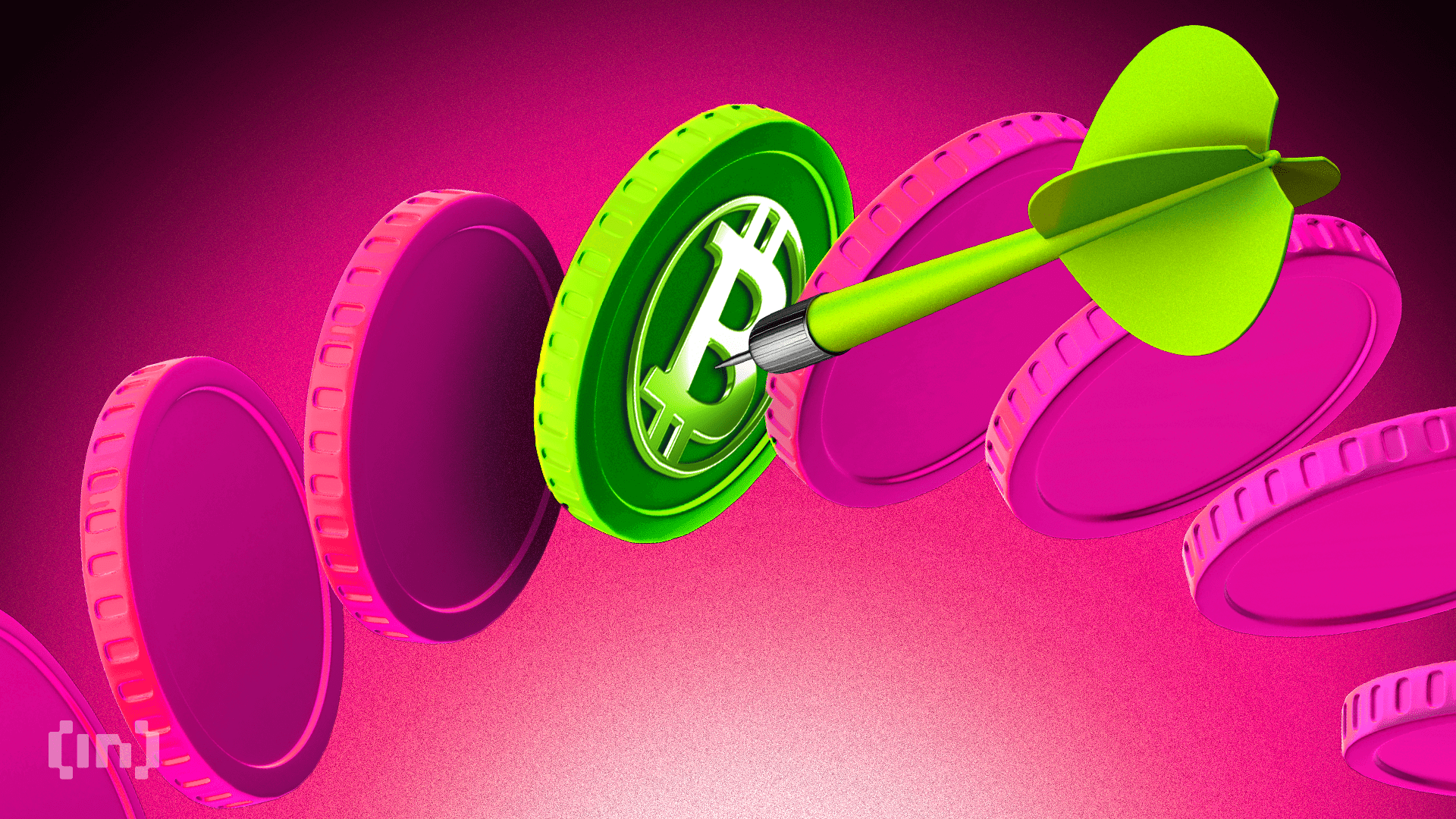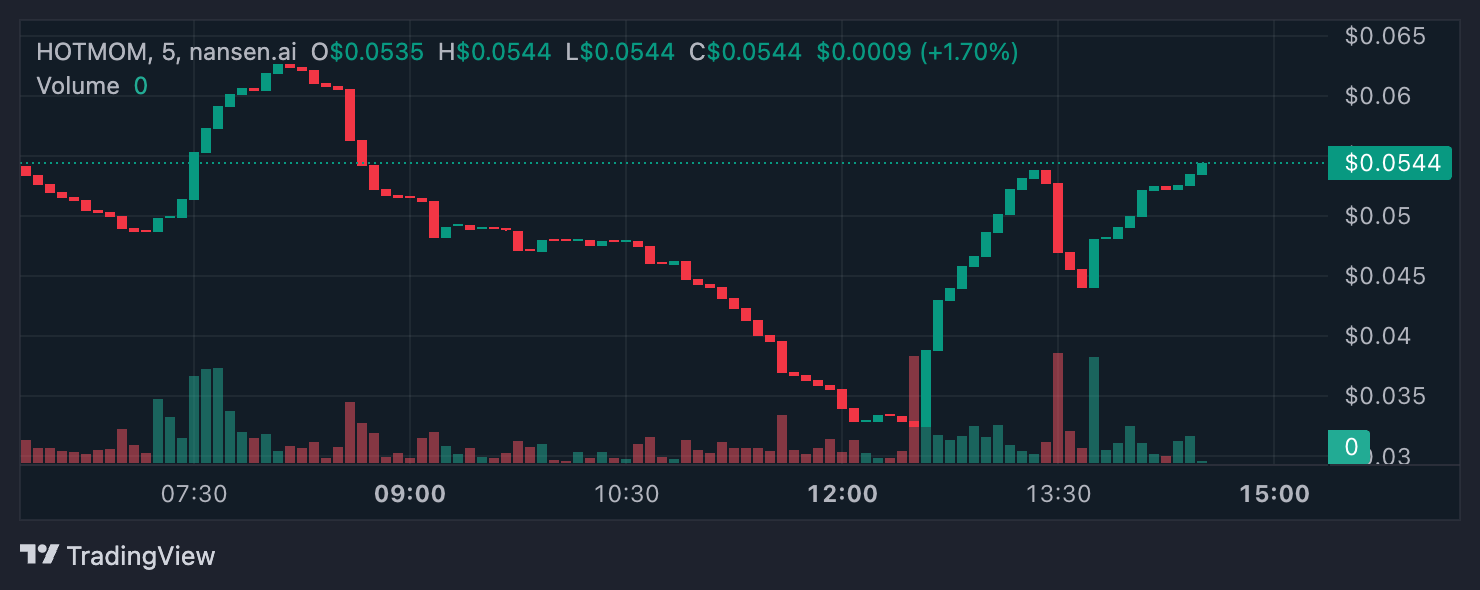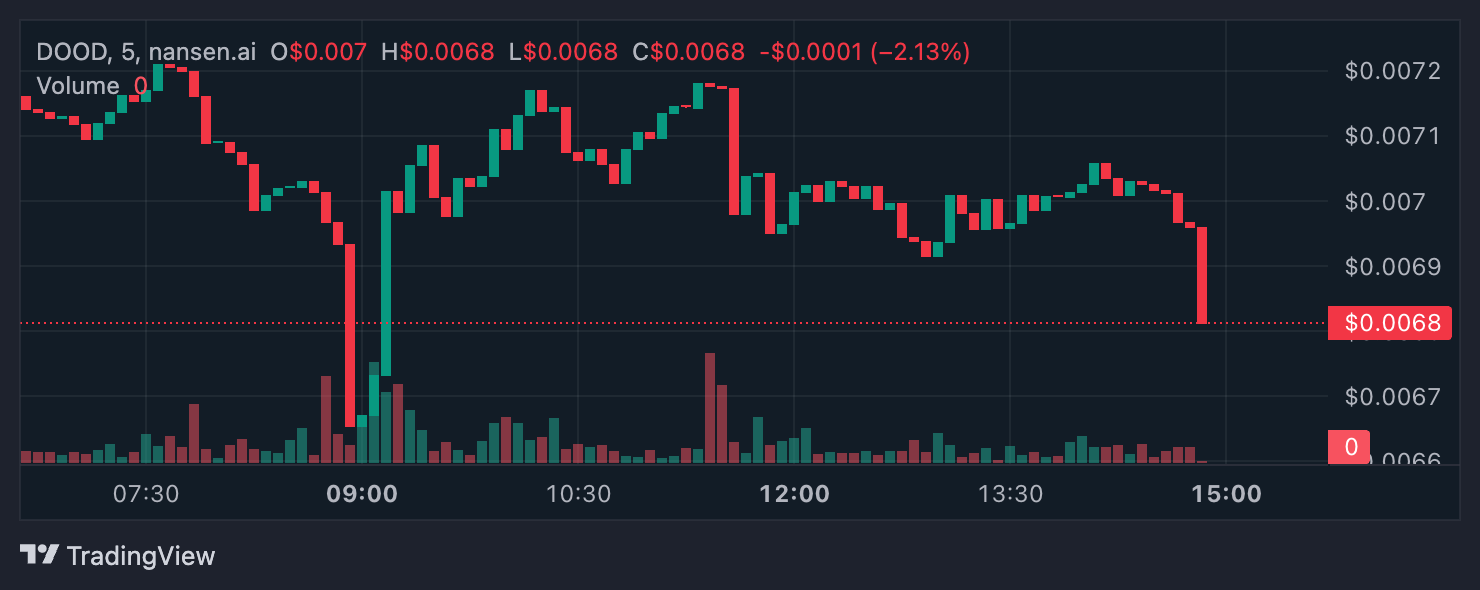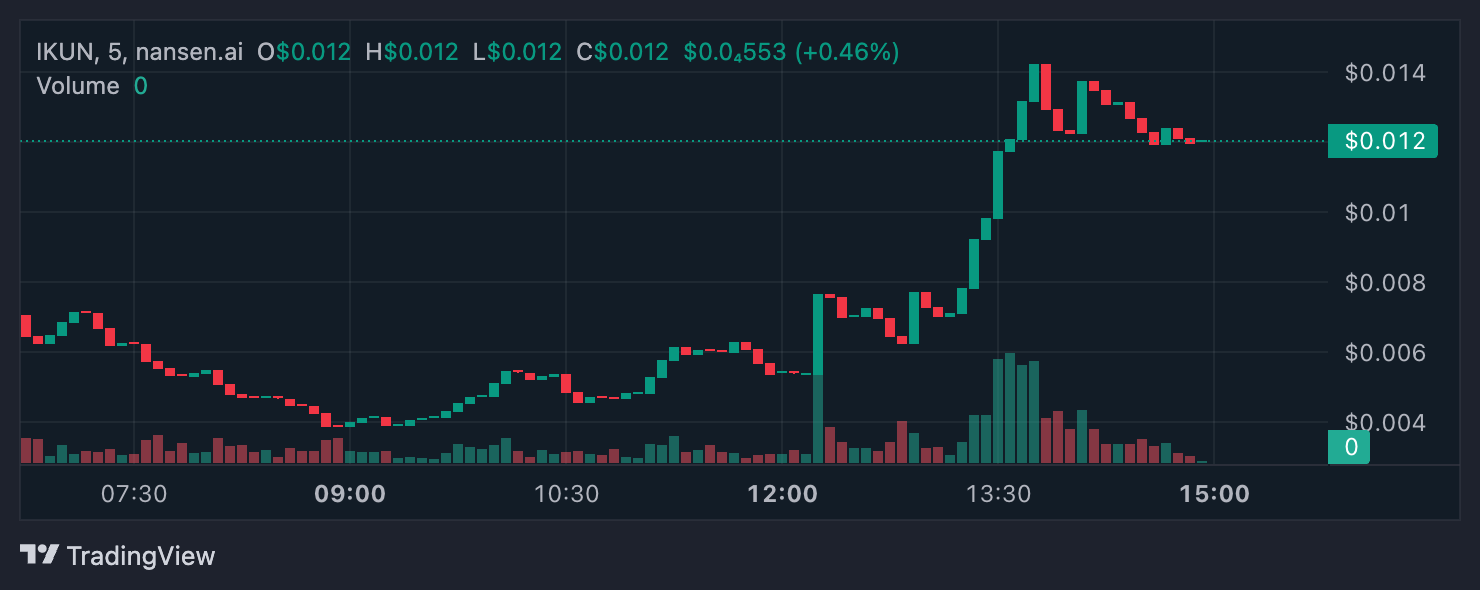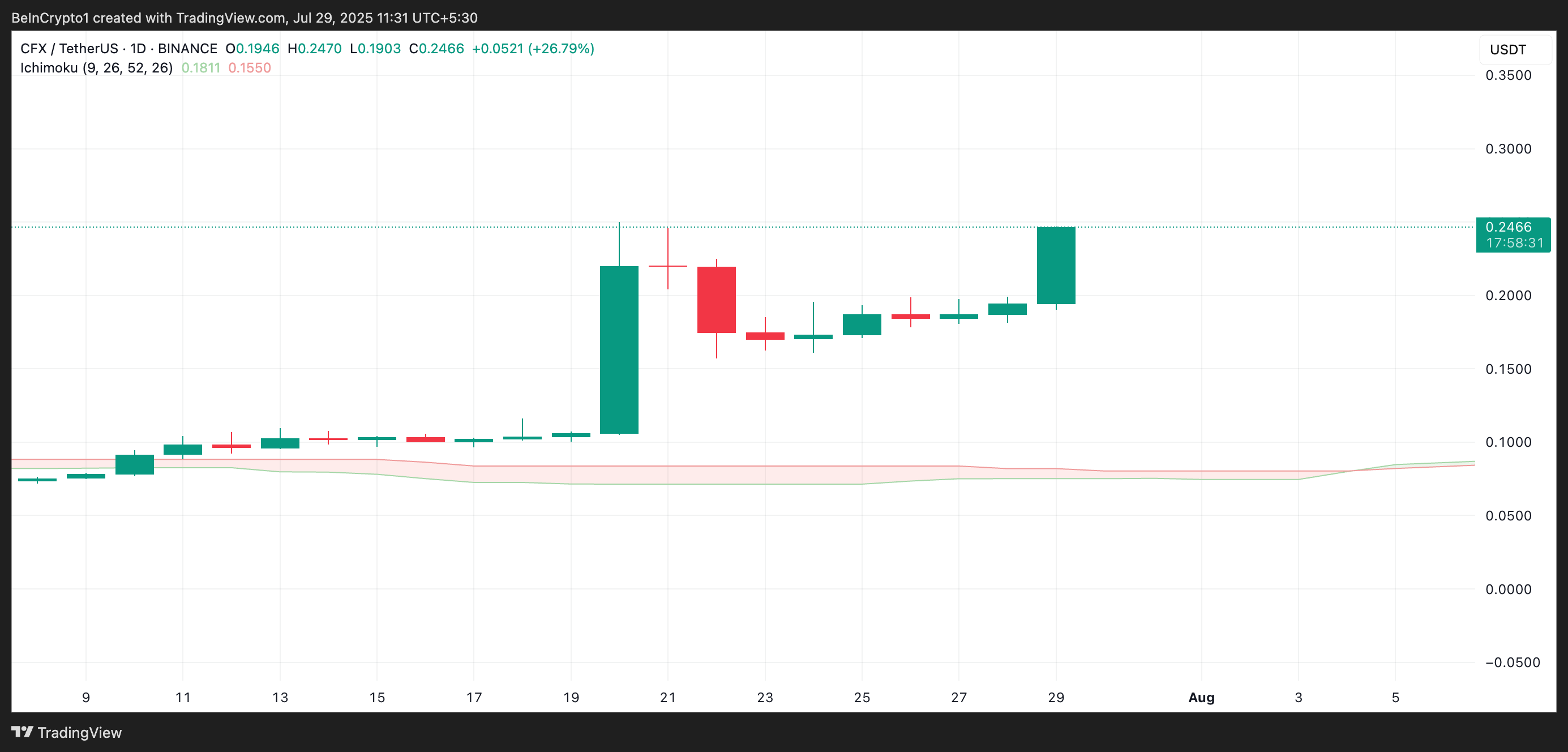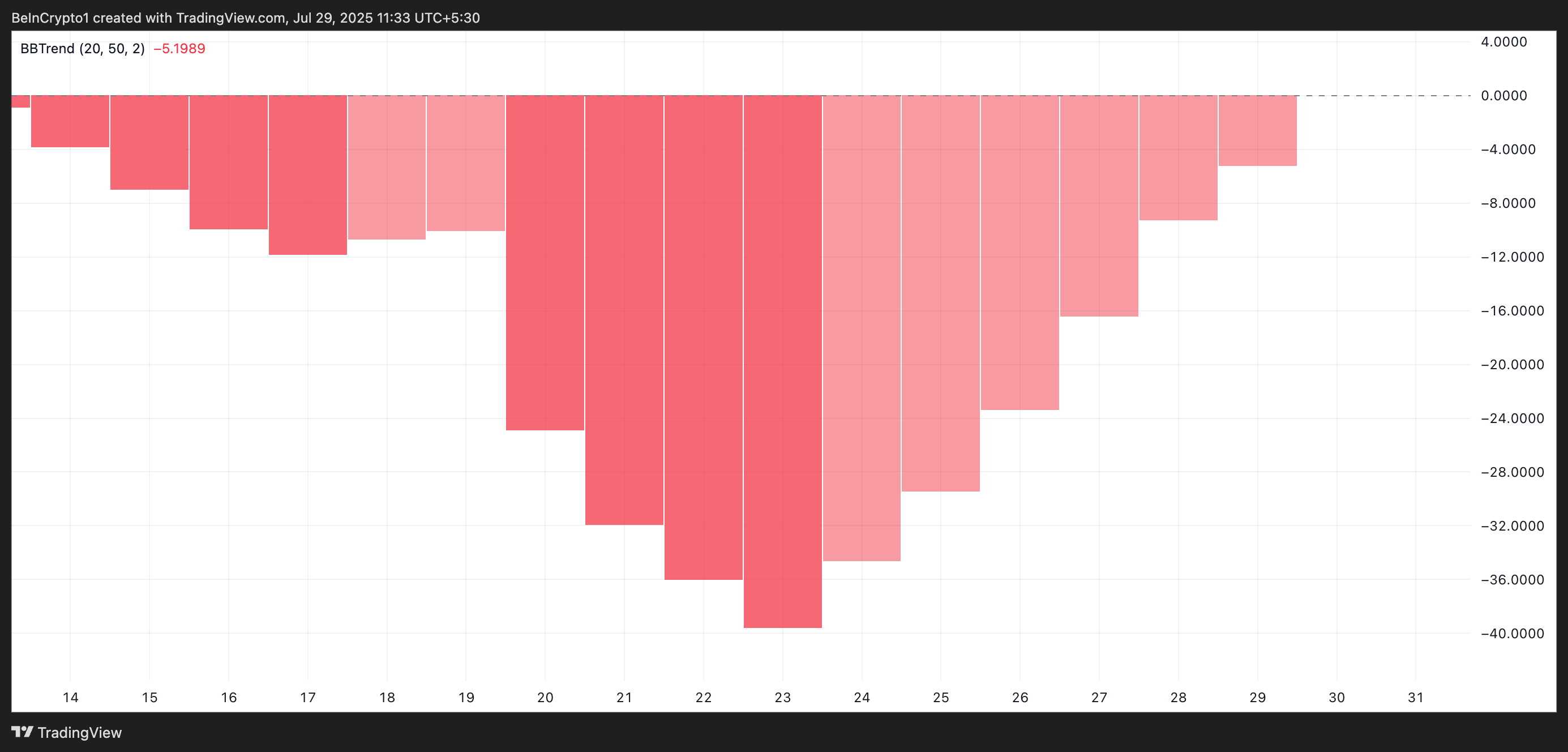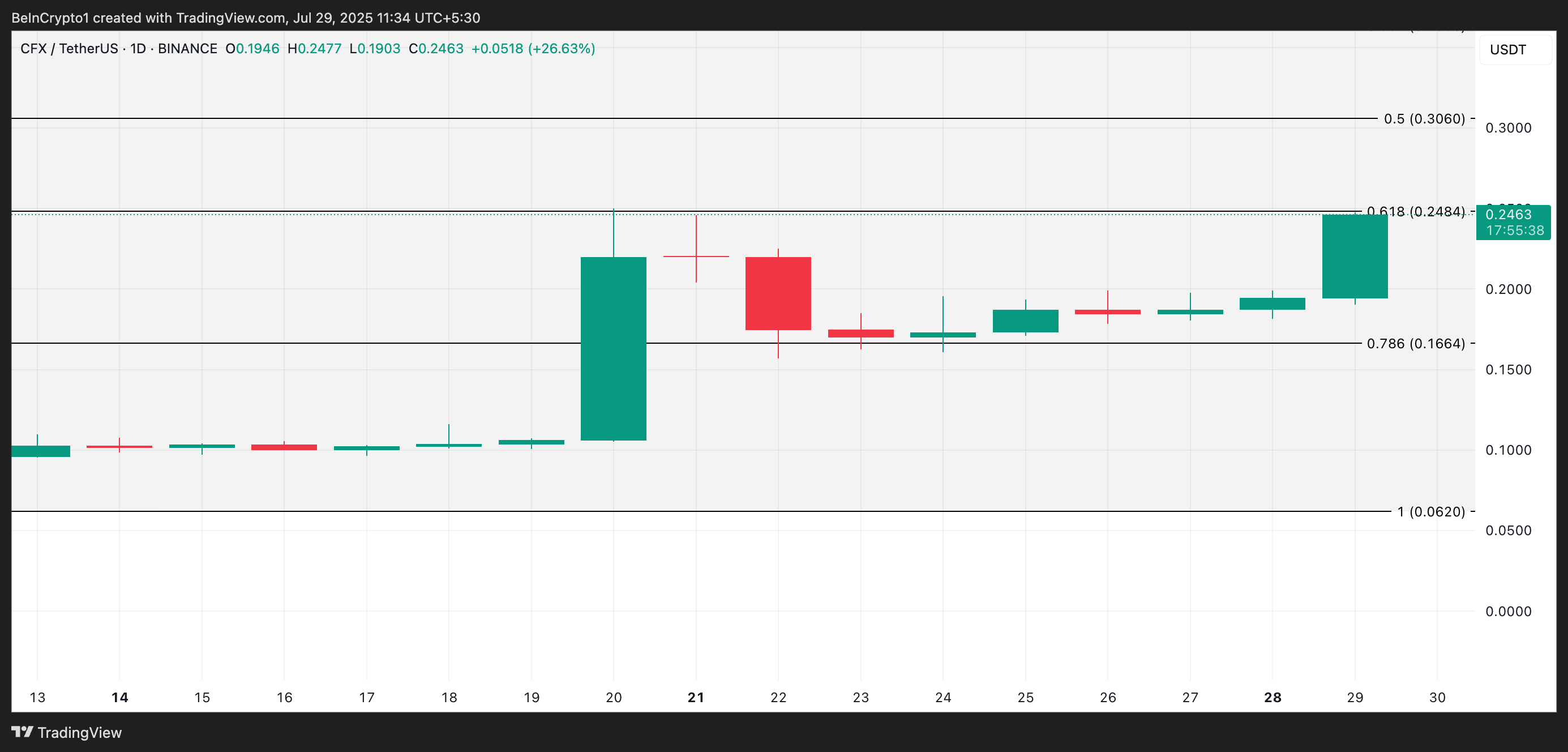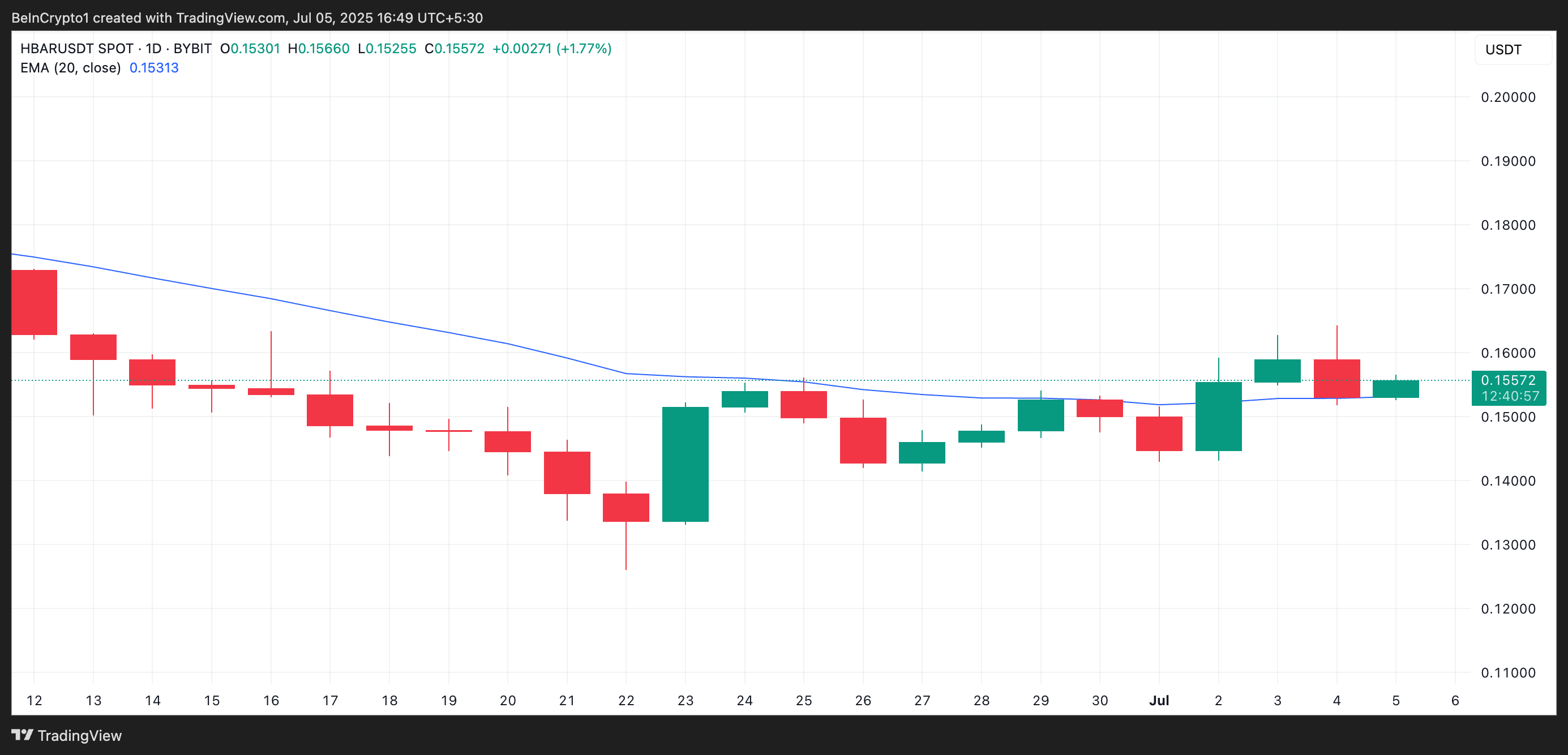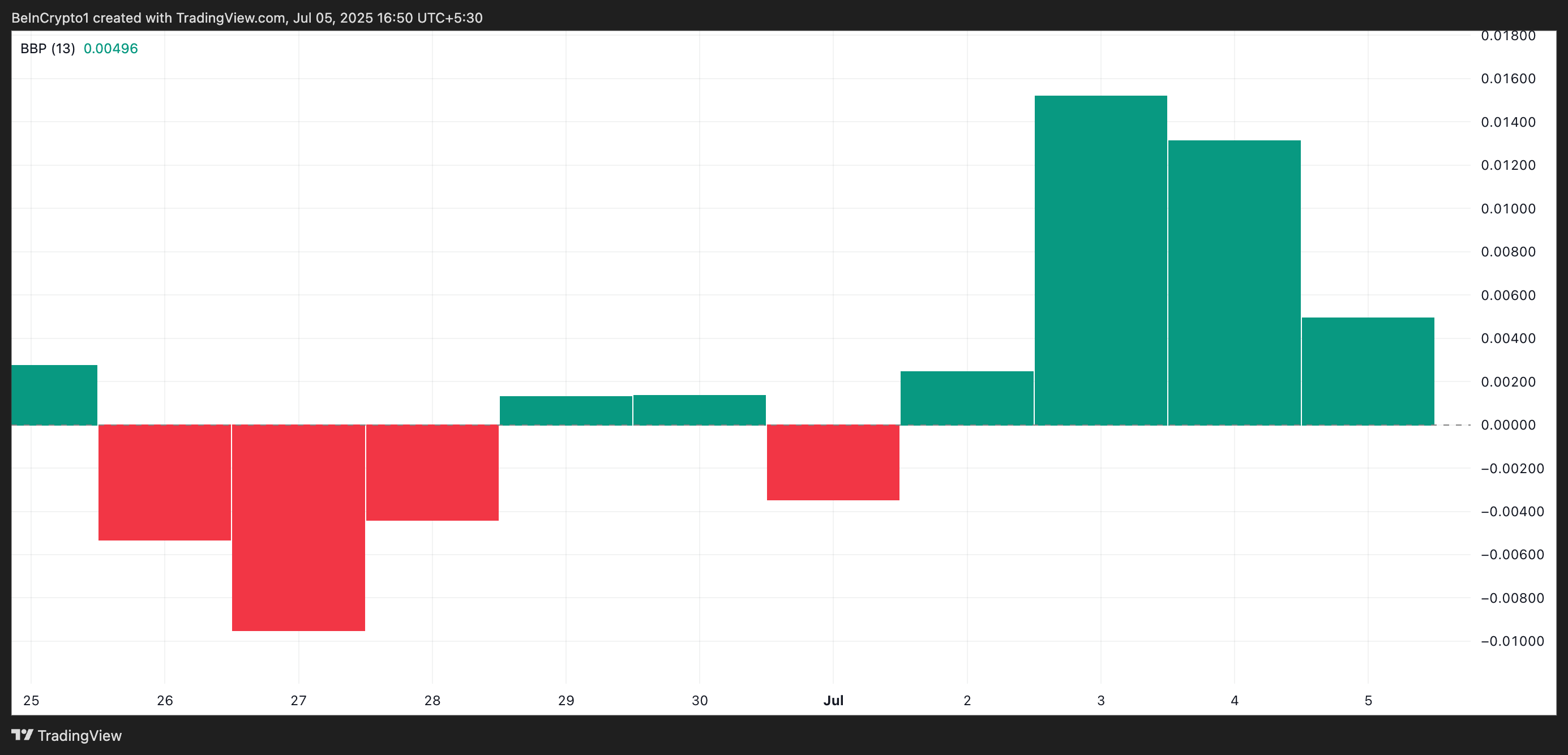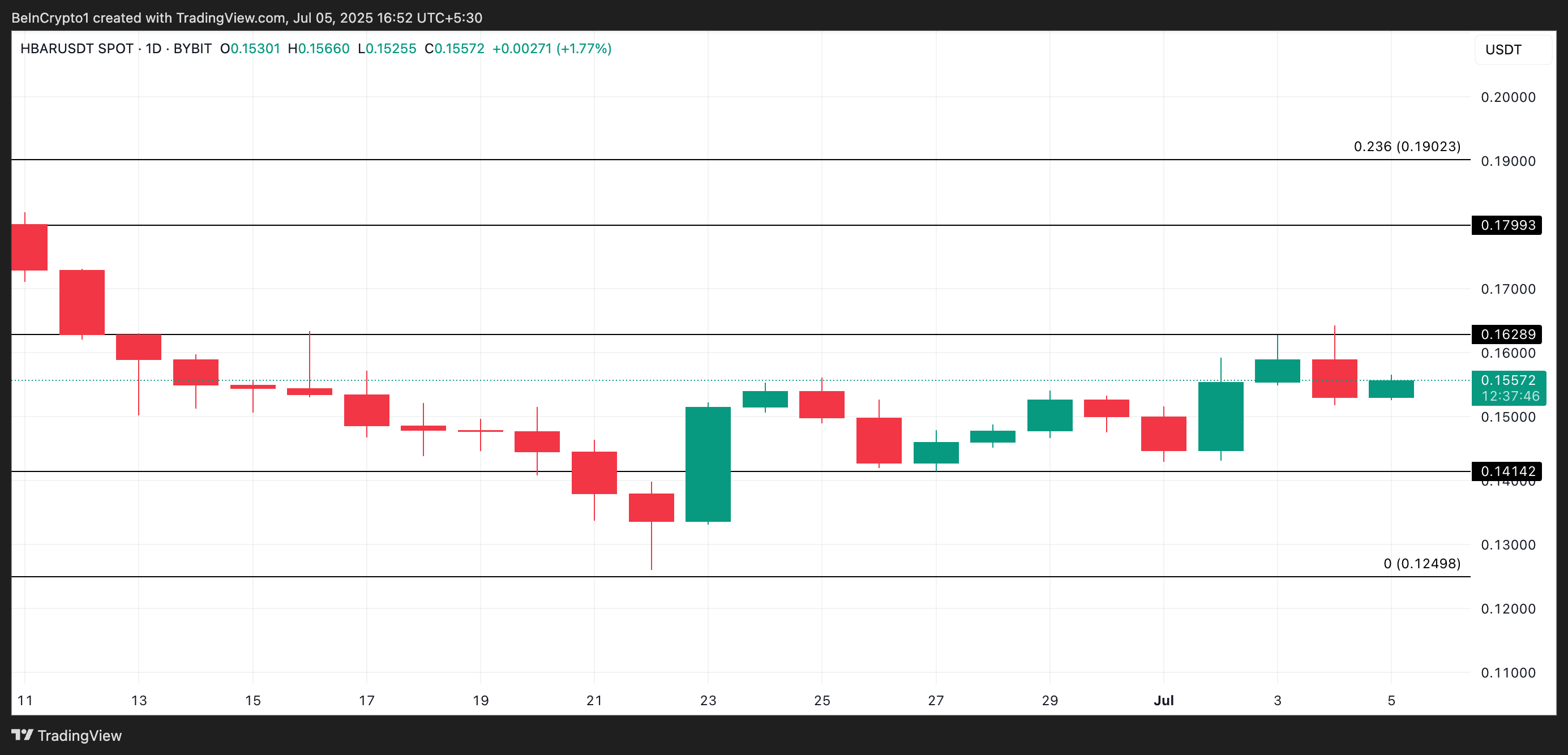Bitcoin (BTC) is up nearly 12% over the past seven days, gaining momentum as it reclaims key technical levels and approaches major resistance zones. The recent price surge has been supported by a slight recovery in the number of Bitcoin whale addresses, hinting at renewed accumulation from large holders.
Technical indicators like the Ichimoku Cloud and EMA lines point to a strong uptrend, with bullish formations suggesting continued buyer control. As BTC flirts with the $100,000 mark again, whale activity and chart signals will determine whether this rally has more room to run.
Subtle Accumulation: What the Rise in BTC Whales Could Mean
The number of Bitcoin whales—wallets holding between 1,000 and 10,000 BTC—has been trying to recover over the past few days, showing subtle but notable movement.
There are 2,006 BTC whale addresses, slightly higher than the 2,000 recorded on April 21. The count briefly rose to 2,005 on April 22 before dipping to 2,002 the next day, and now it’s back above that level.
While these daily fluctuations may seem minor, they often reflect deeper shifts in sentiment and positioning among some of the largest players in the crypto market. The recent stabilization suggests that accumulation might be picking up again after a period of distribution or hesitation.
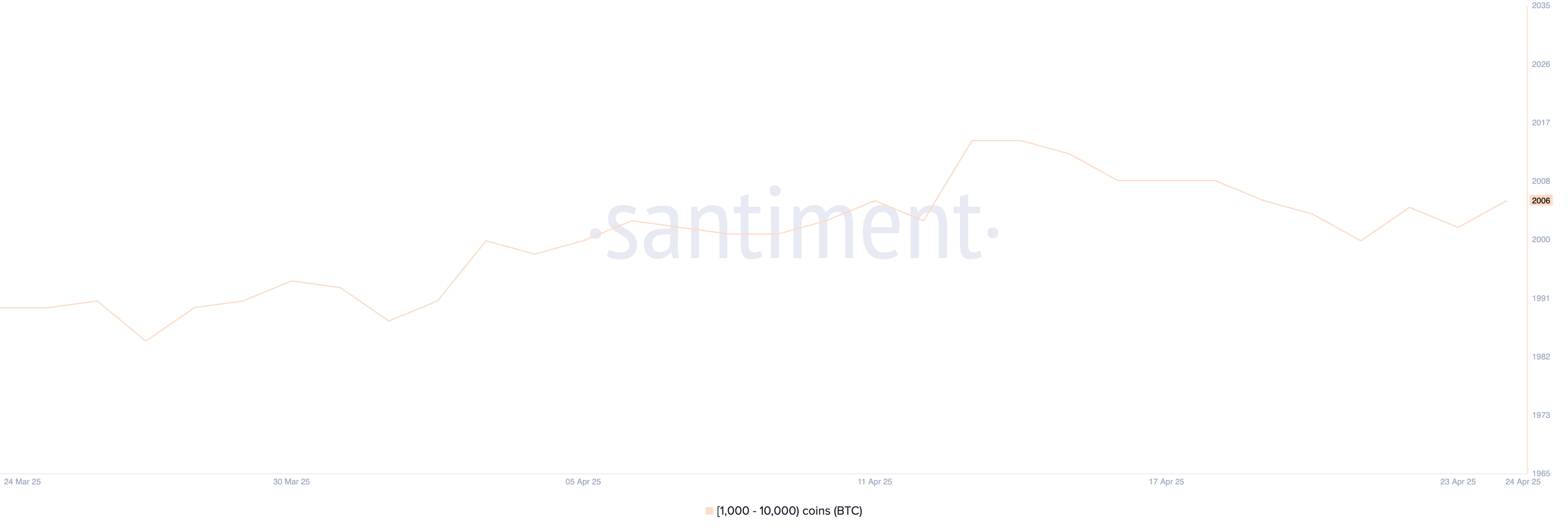
Tracking whale activity is important because these entities tend to have an outsized influence on market trends. Whether institutional investors, long-term holders, or high-net-worth individuals, whales often act with a level of strategic insight and patience that retail investors can’t always match.
Their behavior can signal confidence or caution in the broader market. The number of whale addresses showing a slight upward trend could indicate renewed interest in accumulating Bitcoin at current levels.
This might not immediately translate to a sharp price move. Still, it does add a layer of underlying support to the market, potentially reducing downside risk and paving the way for more sustained bullish momentum if broader conditions align.
Ichimoku Signals Strength in Bitcoin Trend
Bitcoin’s Ichimoku Cloud chart is showing signs of continued bullish momentum.
The price trades above the blue conversion line (Tenkan-sen) and the red baseline (Kijun-sen), indicating short-term strength and trend alignment.
These lines have acted as dynamic support levels throughout the recent move, with price bouncing off them multiple times in recent candles. This suggests that buyers remain in control, and any dips have been met with demand.

The green cloud (Kumo) ahead is thick and rising, signaling a strong support zone and a positive trend outlook.
The distance between the red and green boundaries of the cloud also suggests expanding volatility, which tends to support stronger directional moves.
Because the price is well above the cloud and all key Ichimoku components are aligned in bullish formation, the current setup supports the idea of an ongoing uptrend—at least in the short to mid-term—unless price sharply reverses and closes below the blue and red lines.
Will Bitcoin Break Above $100,000 Before May?
Bitcoin recently broke above the $90,000 mark for the first time since early March.
Its EMA lines support the bullish narrative, with all short-term moving averages positioned above the long-term ones and spaced widely apart—often a hallmark of a strong uptrend.
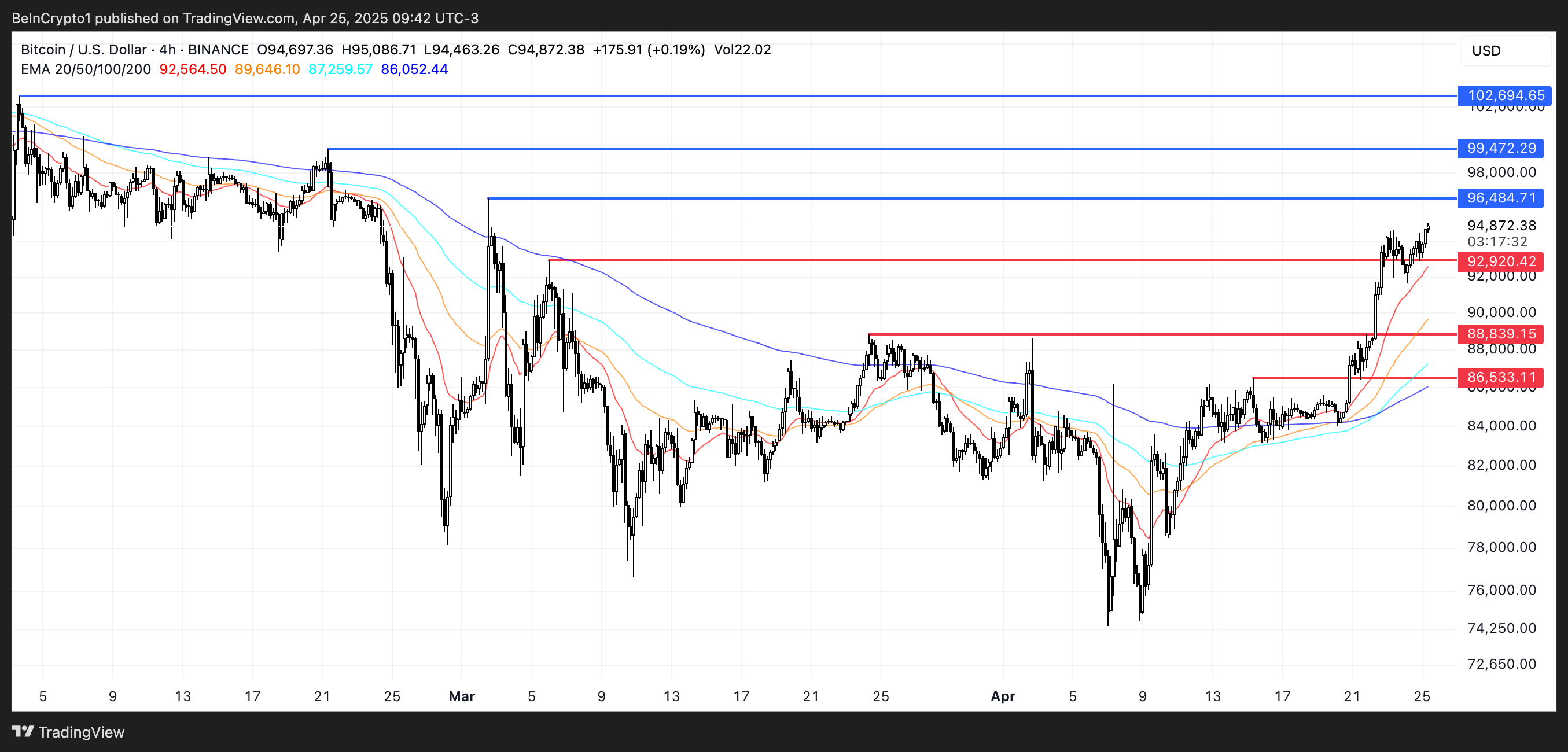
Bitcoin price could challenge key resistance levels at $96,484 and $99,472 if this momentum continues. A break above those could open the door for a push past the psychological $100,000 mark, with the next major target near $102,694—the highest level since early February.
However, there’s still room for caution. It may lose its short-term footing if Bitcoin retests and fails to hold the support level at $92,920.
In that case, price could slide toward $88,839, and if a downtrend takes shape, further losses down to $86,533 become more likely.
The post Bitcoin Whales are Buying as BTC Makes Its Way Back to $100,000 appeared first on BeInCrypto.

